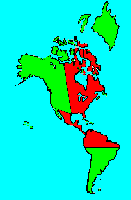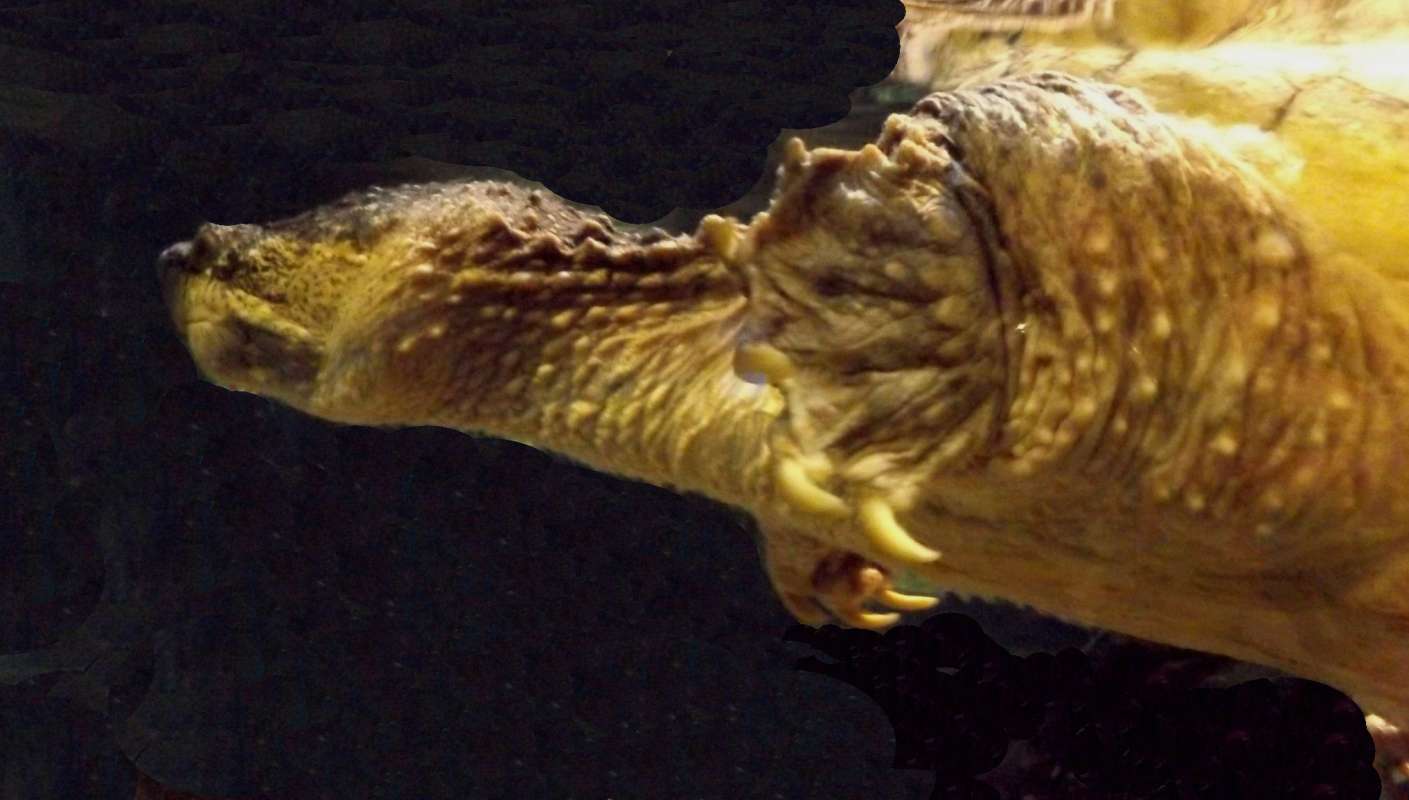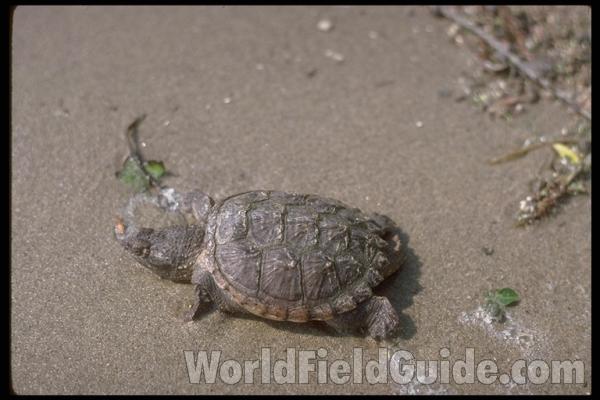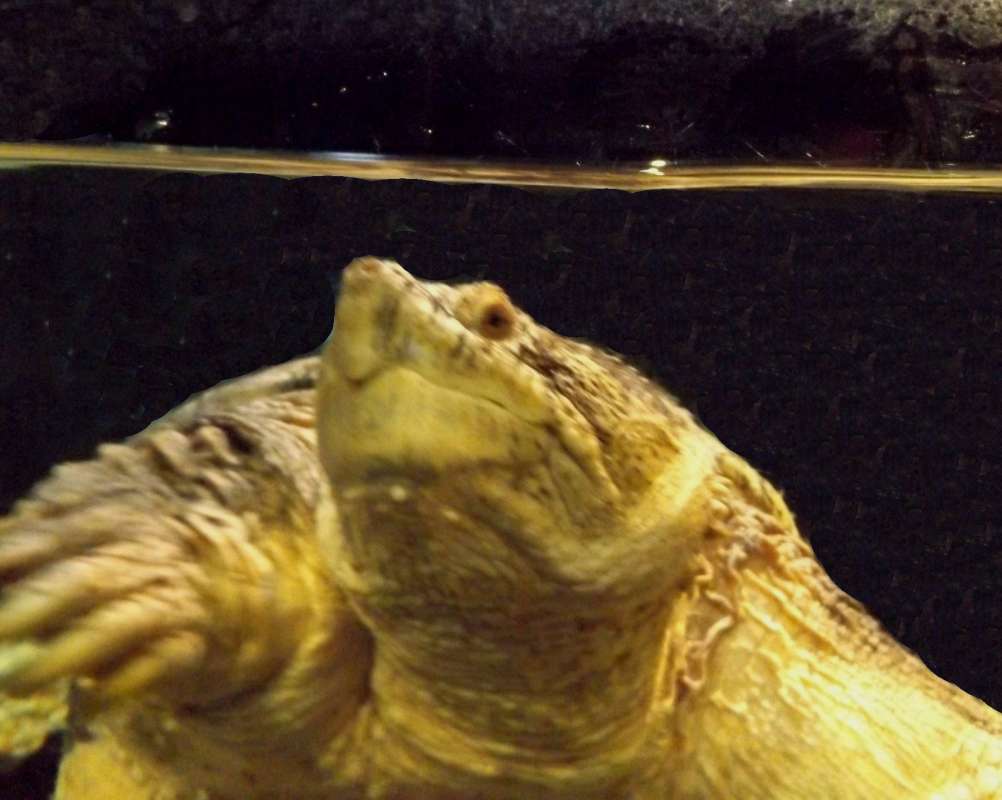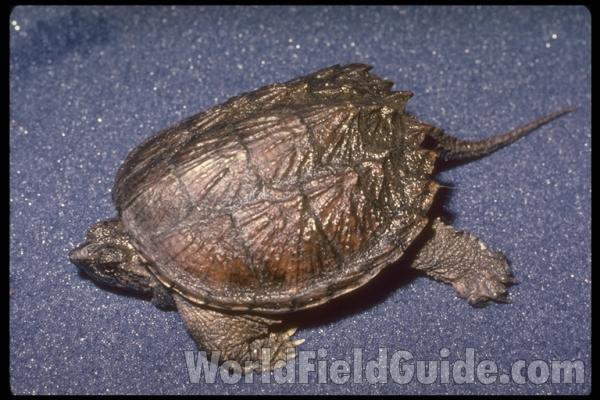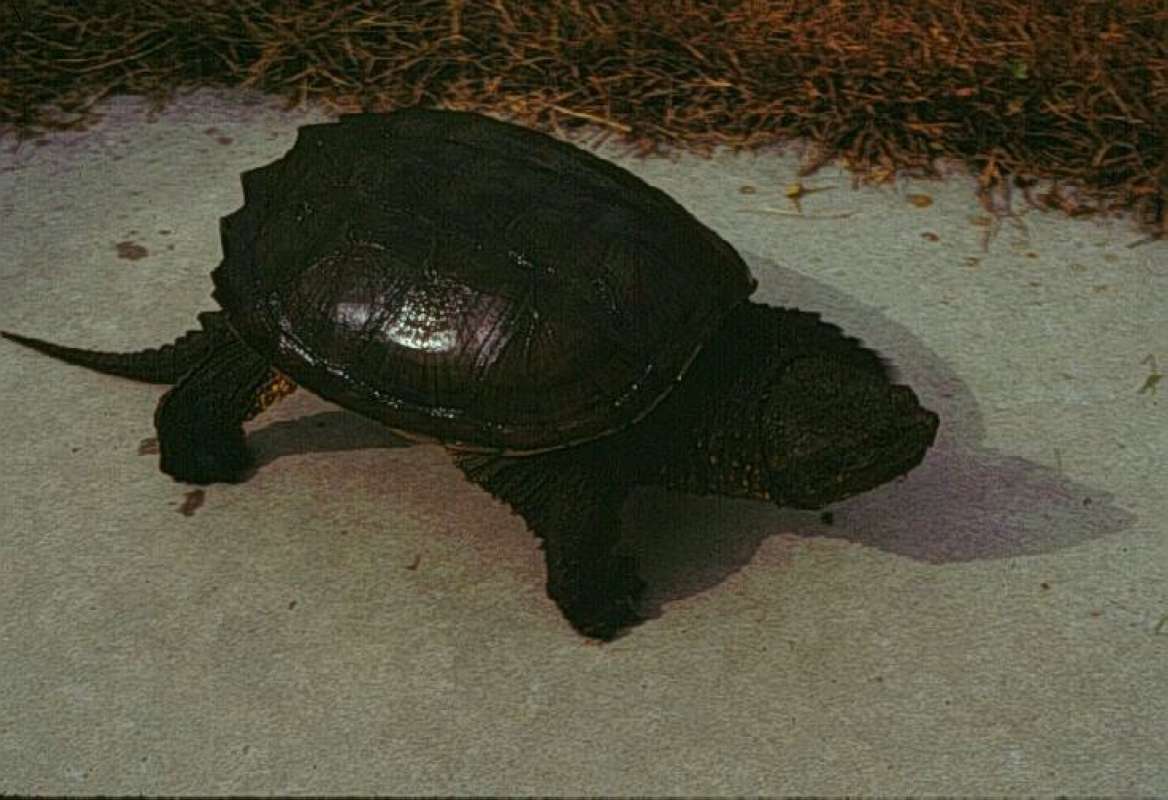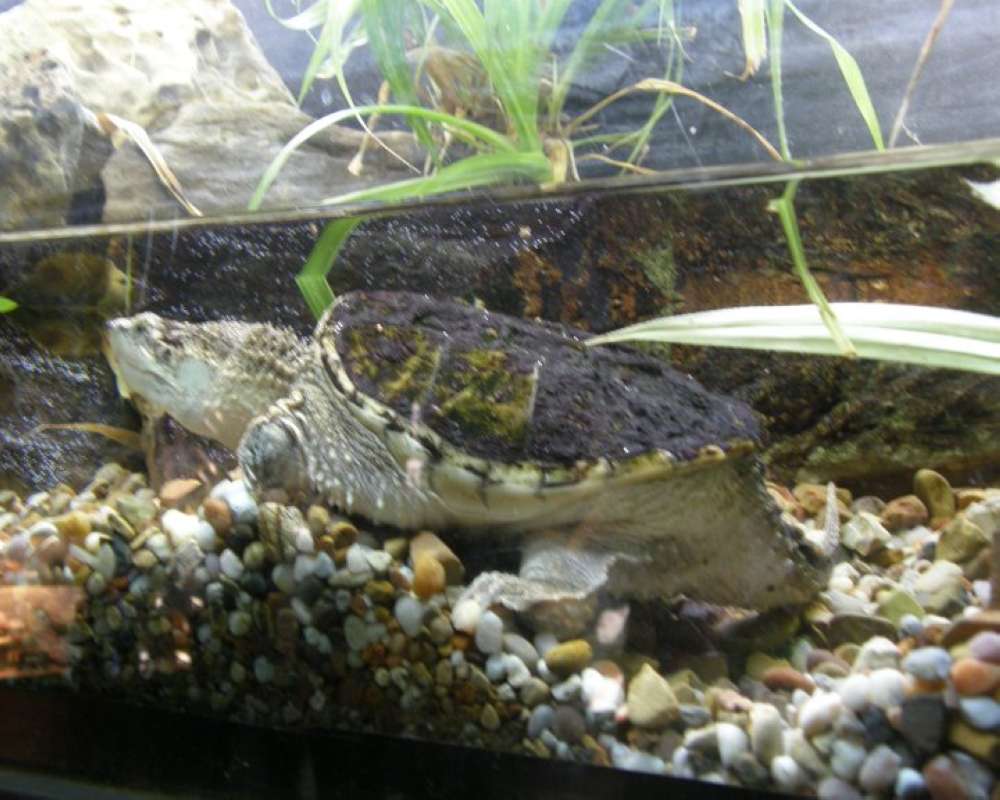SPECIES INFO
Common Snapping Turtle (Chelydra serpentina) can be found in almost any freshwater situation from southern Canada to Florida and west to the continental divide. Some Biologists give the Florida form of this turtle full species status. In addition to the different Florida form, two more forms exist. There is a form found in Mexico and Guatemala. Another form is found from Costa Rica south to Colombia and Ecuador. A notorious feeder, it will eat anything from fish to frogs, ducks to muskrats, crayfish to insect larvae. When cornered on land, it will snap at anything and then not let go. The speed of their strike usually exceeds the human reflex to withdraw. Large examples of this species should be considered very dangerous.
When underwater, snappers frequently take air by just sticking up the very tip of their noses. Frequently, they are found under the banks of rivers and in places where they can easily hide. Consequently, even though very common in many lakes, ponds, and rivers close to civilization, they are very rarely discovered. Snappers are considered good eating and in many places in Ohio, Pennsylvania, and adjoining states, they are commercially hunted. Although most large snappers weigh less than twenty pounds, wild examples of fifty pounds are sometimes taken. Examples up to eighty pounds are also known.Snapping turtle (genus Chelydra) is found from North America into Ecuador. Although some authors raise the Florida snapping turtle to a full species, Ernst and Barbour contend there is only one species in this genus. There are four subspecies: the nominate subspecies (Chelydra serpentina serpentina) - found widely in North America; the Florida subspecies (C. serpentina osceloa) - found on the Florida peninsula; the Mexican subspecies (C. serpentina rossignonii) - found in eastern Mexico from Veracruz south throughout Guatemala and into Honduras; the most southern subspecies (C. serpentina acutirostris) - found from Honduras south into western Colombia and Ecuador.
Snapping Turtle Family (Chelydridae) is found only in North America. These animals are characterized by a long tail with plates and a comparatively small shell system. There are either two or three species in this family depending up how one counts the Florida Snapping Turtle.
Turtle and Tortoise group (Order Chelonia) are among the most primitive reptiles. They are egg-laying creatures characterized by having four legs, a tail, and two shells each made up of many scales that are joined together. There are about two hundred and fifty species of turtles in the world. Carl Ernst and Roger Barbour published a book entitled "Turtles of the World" by the Smithsonian Press in l989. This work covers all of the known species. The authors note that there are two hundred and fifty-seven species of living turtles. Many of these species are pictured and discussed here.
The following overview of the various families included in the Turtle Order is based on the aforementioned publication:
SCIENTIFIC NAME - COMMON NAME - NUMBER OF SPECIES
Pelomedusidae - Side Necked - 23 species
Chelidae - Side Necked - 36 species
Kinosternidae - Mud and Musk - 22 species
Dermatemydidae - River Turtle - 1 species
Carettochelyidae - Pig Nose - 1 species
Trionychidae - Soft Shelled - 22 species
Dermochelyidae - Leatherback - 1 species
Cheloniidae - Sea Turtles - 6 species
Chelydridae - Snapping turtles - 2 species
Platysternidae - Big Headed - 1 species
Emydidae - Pond and Box - 91 species
Testudinidae - Tortoises - 50 species
256 total species
While the above counts are currently reliable, they will be impacted by findings as research continues. For example, the exact count of the species of tortoises in the Galapagos and placement of the Florida Snapping Turtle might change these counts.
Reptiles (Class Reptilia) are an ancient group of scaled chordates. These scales may be permanently joined, as in the turtles, or flexible, as in the snakes. Reptiles are land-based. Their eggs are laid on land and the young are air breathing.
In the Great Big Book of Snakes and Reptiles published in 2014, they noted that there are more than 7,000 species of reptiles alive today.
Backboned Animals (Phylum Chordata) are the most advanced group of animals on earth. These animals are characterized by having a spinal cord or backbone. Most members have a clearly defined brain that controls the organism through a spinal cord. Fish, amphibians, reptiles, birds, and mammals are in this phylum.
Currently, some taxonomists believe that the fish should be divided into two groups (sharks and regular fishes) and that there are some other primitive groups in the phylum such as hagfish or lampreys.
Animal Kingdom contains numerous organisms that feed on other animals or plants. Included in the animal kingdom are the lower marine invertebrates such as sponges and corals, the jointed legged animals such as insects and spiders, and the backboned animals such as fish, amphibians, reptiles, birds, and mammals.
